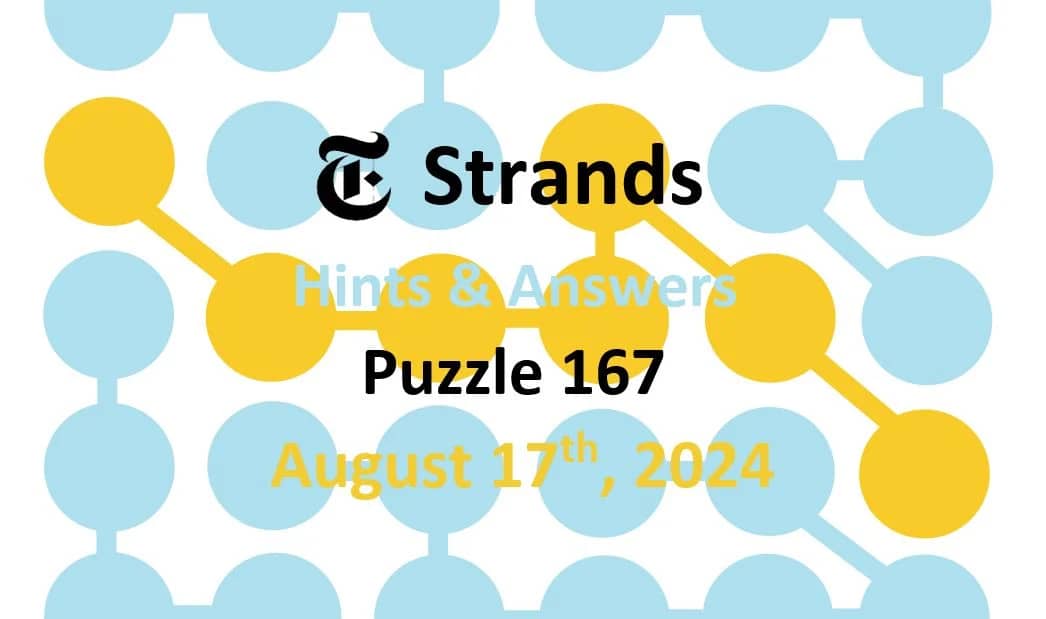NYT ‘Strands’ Hints, Pangram And Answers For Saturday, August 17th, one of the Best Game
Introduction
Word puzzles have a way of engaging our minds. They test us, titillate our minds, and at times, leave us scratching our heads. In this case study, we’ll delve deep into the New York Times puzzle entitled “Strands,” together with its hints, pangram, and answers for Saturday, August 17th.
The Puzzle: “Strands”
Overview
The “Strands” puzzle is a cryptic crossword that puts one’s faculties at the highest pitch: wordplay, lateral thinking, and linguistic acrobatics. Not simply a crossword, it is more of a course with obstacles that test your lexicon, wit, and ability to identify patterns. Hints and Clues The Title: “Strands” There is a hint in this title itself. Strands may refer to hair, DNA, or strands of thoughts. Keep that in mind while solving it. Wordplay Galore
Cryptic crosswords run on wordplay; be on the lookout for anagrams, hidden words, and homophones. Clues themselves are sometimes remarkably simple, but it’s those wild rides they send you on.
Spangram Challenge
A pangram is any set of letters consisting of all the letters of the alphabet at least once. In “Strands,” keep an eye on the letters given. They may be the ones to help unwrap some of the answers to this puzzle.
The Energized Tone
Imagine yourself in a warm coffee shop, all cozied up with a latte, scribbling furiously on the puzzle grid. The clues dance before your eyes; your brain races to connect the dots. You’re not solving a riddle, you’re having an adventure.
The Answers: Aha Moments Await
1. “Aha!” Moments
Those “aha!” moments come as you fill in the squares. In a second, the unrelated clues appear to come together—now you realize that “Strands” isn’t just about words; it is all about weaving ties.
2. Information Gems
Each answer is a learning gem. You will learn that “quixotic” refers to one who is exceedingly idealistic or impulsive in behavior, especially in the pursuit of a seemingly hopeless romantic quest. Or perhaps a “xenophile” is someone who has a deep love for foreign cultures. The puzzle is not just an amusement or diversion, but a learning journey.
3. Satisfaction of Completion
You fill in the last square. The final letter drops into place, and you sit back, triumphant. You’ve cracked the code, deciphered the cryptic language, and come out victorious.
How can I improve in cryptic crosswords?
Get to Know the Lingo:
Cryptic crosswords have their vocabulary. Familiarize yourself with terms such as anagrams, reversals, hidden words, and charades. Knowing these will help you crack the code.
Break It Down:
Break down the clue into its parts. Indicators in the clue will point one in the right direction; the indicators may be “mixed,” “reversed,” or “around.” These guide the solver to think.
Practice with Wordplay:
Begin by solving easier wordplay puzzles. Maybe start with anagrams by jumbling letters into different words. Then progress onto harder techniques.
Acronyms and Abbreviations:
So often, a cryptic clue will include an abbreviation or sometimes even an acronym. Learn the common abbreviations—for example, “doctor” for “Dr.”—to help you find your way through the hints.
Spotting the Definition:
Every cryptic clue has a definition part. Identify it—it’s usually at the beginning or end of the clue. The rest is wordplay.Cryptics require lateral thinking. Don’t take clues literally. Explore multiple meanings and synonyms.
Practice, Practice, Practice:
Solve puzzles regularly. The more you practice, the better you’ll get. Challenge yourself with different publications’ crosswords.
Use Online Resources:
Websites and apps offer explanations for cryptic clues. Learn from their breakdowns.
Collaborate:
Discuss clues with fellow enthusiasts. Sometimes a fresh perspective can help.
Patience and Persistence:
Cryptics can be tough but don’t give up. Each clue you solve adds to your skill set.
Conclusion
It is word puzzles like “Strands” that remind us just how intricate and beautiful an instrument our brains are. They challenge us to think outside the box, to scan linguistic nooks and crannies, and to celebrate the joy of discovering something. So, next time you come across a cryptic crossword, seize it with both hands. You never know what interesting strands of knowledge you might unravel.

